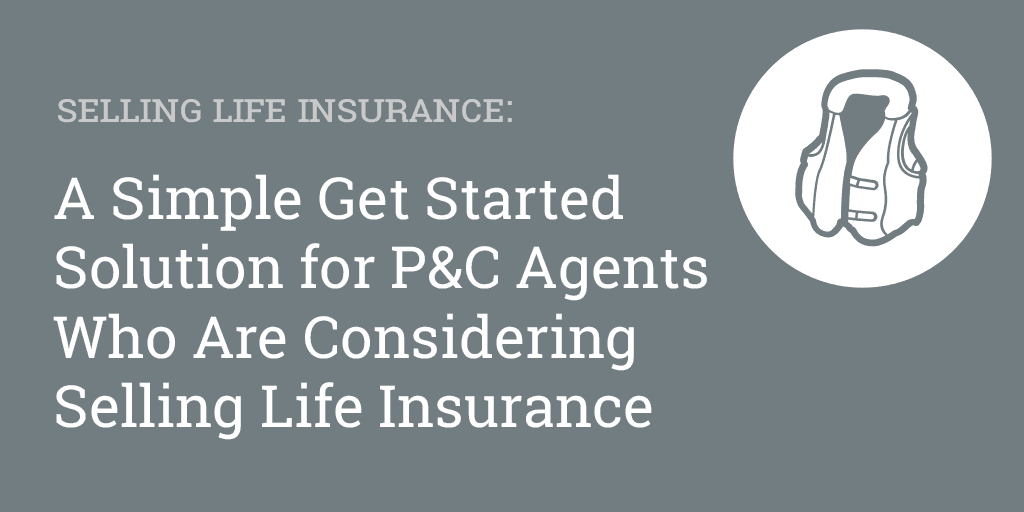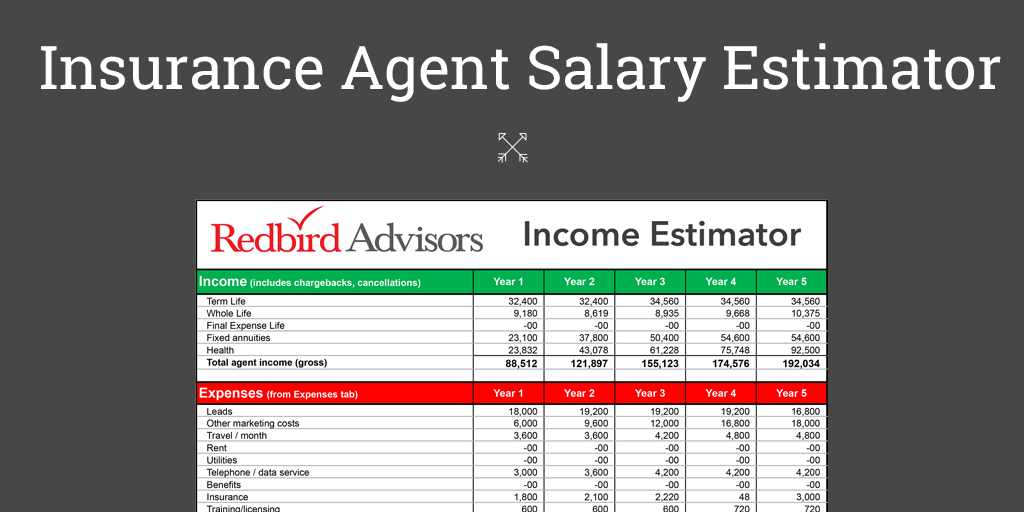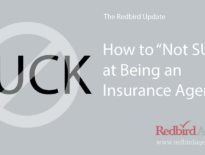
This is for existing P&C insurance agents who want to learn how to get started selling life insurance.
It’s easy… it’s really, really easy to learn how to get started selling life insurance.
Your unique advantage is that you bring a client base to the table; one that knows you (or one of your agents or CSRs) and is loyal.
While you may have shied away from taking the leap, take a few minutes to read this short story and then give me a call.
You won’t be disappointed and it might even change your life!
Getting started selling life insurance is simple.
You might think it’s old fashioned, but it works. Just follow these three steps.
Step 1: Find a life insurance lead program
The goal is to generate a discussion, not make a sale. At least not yet!
The news that you are selling life insurance will be new for clients, so they will likely need an initial conversation to better understand your goals and capabilities.
The “how” of generating that first discussion is blindingly simple: mail hand-signed, relatively short personal letters on your stationary (with a real stamp). These are the best exclusive life insurance leads you will ever find!
It is rare these days to receive a personal letter and it will significantly improve the number who agree to speak with you.
And, guess what?
We already wrote the letters for you, you just need to download, customize and start using them.
You can also check out how we use leads here.
Step 2: Follow up with a phone call
This may seem shocking, but all you need to do is pick the phone up and call.
The number of life insurance letters you send each week is based on the number of follow-up calls you are willing to make the following week. We recommend sending at least 20 per week (with a goal of generating 6-8 opportunities for a discussion).
If you think 20 is too much work, then send 10. If 10 is too many, send five. The goal here is for you to commit to a level of activity that ultimately becomes a strong habit.
If you don’t want to make the calls then find someone in your office who can. But, someone has to follow up or you will get significantly lower results. Whatever you do, do it on a regular basis, preferably weekly.
Use the simple language below and you’ll be pleasantly surprised at your results.Remember, your first call is to break the ice and eliminate the common objections.
You want to make sure they know you aren’t going to take up a lot of their time or give them a high pressure sales presentation. Don’t over complicate this, the intent is to secure the appointment.
“Mr. Prospect, this is (Agent Name) from (XYZ Agency Name). Did I catch you at a bad time? Great, I wanted to follow up on the letter I sent you last week announcing we have expanded our services. It’s amazing how many people we have found that are either overpaying or under-insured with no agent relationship to turn to for help. As we already hold your home and auto policies, I wanted your permission to go ahead and schedule your annual review which will take no more than 30 minutes. I have availability next Tuesday at 11:30 and 3:00 (Always offer two options), which one of those works best for you?”
FREE DOWNLOAD: Cross Selling Life Insurance Marketing Bundle
Download Your Copy
Step 3: Get Started Selling Life Insurance
Your simple approach landed your annual review and you were able to effectively cross sell life insurance to your client and increase your policies per household.
Check out this video on 3 paths to selling more life insurance.
While this approach is incredibly simple, two factors can make it go south in a heartbeat: the wrong message and the wrong target audience.
We can help with both.
The right clients for cross selling
Clearly, you need to speak differently to commercial and personal lines clients. Even if you’re simply announcing your expansion into life insurance, the tone and approach of the message should be different.
However, the real issue—and opportunity—will be to determine what specific groups or segments of clients to target.
Let’s tackle each one:
Cross selling commercial clients life insurance
Small to medium sized business owners are a fertile target audience. For example, LLCs have operating agreements and owners often have buy-sell agreements.
Buy-sell agreements typically require each member to have life insurance (Term, UL or IUL) to protect the business in the event of the death or removal of an officer, often called Key Man/Person insurance.
Other business structures have similar needs. We would recommend one of your first letters focus on life insurance to protect their business.
I can almost guarantee that if they open the envelope and see the subject, they will read it.
Cross selling personal lines clients life insurance
The segmentation possibilities are almost infinite.
We would encourage you to filter your client base by age and income to start.
For example, a young client or family with children (less than 30 years old and making less than $75,000) is the perfect candidate for term insurance.
Remember, term life insurance is the most basic protection at the lowest annual premium. An older family, with teenagers headed to college, making $150,000 per year has many more needs for life insurance.
And, don’t forget those older than 55 or the wealthy.
Fixed annuities are an excellent tool to manage risk and provide predictable income in retirement (and most clients are totally unaware of the benefits of annuities).
The cross selling opportunities are endless.
The right message
Traditionally, insurance marketing is very product focused.
In effect, the message is: “Here’s what you should buy.”
That’s short-sighted.
So, even if term life is something we offer to multiple segments, what we say to the young couple will undoubtedly be different than what we say to the couple with college just around the corner.
Too often marketers carpet bomb with the same message and then wonder why nobody responded.
Don’t make that same mistake.
Selling life insurance in a P&C agency
Many P&C agents dismiss life insurance as a distraction.
The successful P&C agents we work with don’t see it that way at all. They recognize the unique position they have with their clients and believe they can simplify and condense the sales cycle because of the relationships they have built over the years.
I say it all the time when meeting with P&C agents, “your MDRT qualification is sitting in your file cabinet.”


